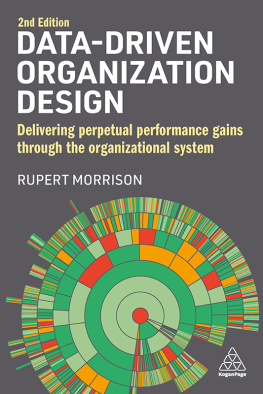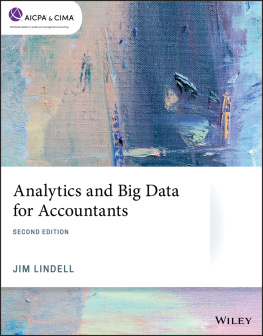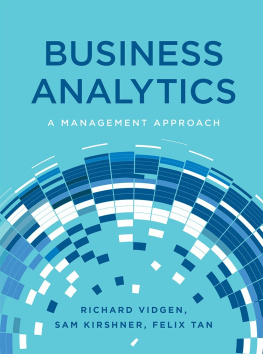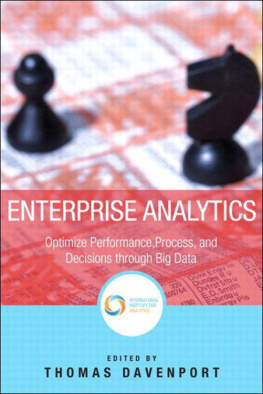Improving Convention Center Management Using Business Analytics and Key Performance Indicators
Improving Convention Center Management Using Business Analytics and Key Performance Indicators
Advanced Practices
Myles T. McGrane

Improving Convention Center Management Using Business Analytics and Key Performance Indicators: Advanced Practices
Copyright Business Expert Press, LLC, 2020.
Cover image licensed by Ingram Image, StockPhotoSecrets.com
Cover photo is of the Orange County Convention Center in Orlando, FL
Cover and interior design by Exeter Premedia Services Private Ltd., Chennai, India
All rights reserved. No part of this publication may be reproduced, stored in a retrieval system, or transmitted in any form or by any meanselectronic, mechanical, photocopy, recording, or any other except for brief quotations, not to exceed 400 words, without the prior permission of the publisher.
First published in 2020 by
Business Expert Press, LLC
222 East 46th Street, New York, NY 10017
www.businessexpertpress.com
ISBN-13: 978-1-95253-806-3 (paperback)
ISBN-13: 978-1-95253-807-0 (e-book)
Business Expert Press Tourism and Hospitality Management Collection
Collection ISSN: 2375-9623 (print)
Collection ISSN: 2375-9631 (electronic)
First edition: 2020
10 9 8 7 6 5 4 3 2 1
Printed in the United States of America.
Abstract
I wrote this book because I believe convention centers can perform better. Many in senior management positions feel likewise and have a good sense of their centers potential for growth. As busy as they are, theres little time and resources available for thoughtful development of a fulsome management strategy to lift their centers performance. In our work environment its common for managements attention to be diverted and overwhelmed by the small problems of the day. Meeting agendas where the latest event profit/loss statements are reviewed or sales leads discussed are often deferred. Why is this so? The principal cause is that operational and customer service data are not collected and organized in a form that is easy to follow, draw conclusions from and acted on. Action is most likely not data based but rather based on intuition and gut feeling. How can management get past this, where can you turn?
The answer is to adopt and embrace business analytics and key performance indicators (KPIs). Improving Convention Center Management Using Business Analytics and Key Performance Indicators (both volumes) will guide you through that process. It introduces and rolls out sound practical advice from an author who has experienced and succeeded in what was one of the toughest work environments in our industry. Other KPI advice and how to books do not touch on the business and performance metrics unique to our industry. KPIs presently used are very general and only presented in publications such as annual reports.
I believe this book is best suited for the practitioners who work at convention centers or with a company that services convention centers. These are the individuals who make things work; managers at all levels, from senior leadership to floor supervisors. This book is also a useful resource for those in graduate schools of business or hospitality and hotel administration. It ties theory to actual practice. Others may find it interesting and informative too; political staff, city managers, hotel operators, bond underwriters and investors, engaged citizen groups, and all those businesses that either supply, service, or depend on convention center events.
Keywords
Convention Center (or Centre); Convention and Visitor Bureau (CVB); Convention and Exhibition Center; vertical market; Key Performance Indicator (KPI); tradeshow; occupancy rate; consumer show; net square footage; economic impact; hotel or hotel occupancy tax; economic feasibility study; exclusive contractor; earned revenue; social media presence; soft target; Wifi; license agreement; deferred maintenance; labor union grievances; event organizer; electric demand charges; Net Promoter Score (NPS); Workmans Compensation Fraud; Experience Modification Rating (EMR); Hotel room nights; Javits Center; IMPLAN
Contents
Volume 1 focused on fundamental indicators that are essential to using business analytics and KPIs as a management strategy. Volume 2 expands the program introducing KPIs that I regard as important but more appropriate after fundamental KPIs have been tried. The KPIs in this volume are closely related to KPIs described in Volume 1. These derivatives represent a deeper dive into factors affecting Volume 1 KPIs. Know that in some circumstances derivatives may become very important. They are useful and can surprisefrom time to time in my experience derivatives yielded more valuable and actionable data than fundamental KPIs.
Most of the chapters in this volume (14 and 69)) are composed and formatted the same as Volume 1, covering major business functions such as Convention Center Business Fundamentals, Earned Revenue Activities, Security and Safety, and so on. For each KPI the narrative follows the format noted below:
KPI
Owner
Data Sources and Collection
Reporting Frequency
Why This KPI Is Useful
Objective
Managing Unfavorable Conclusions and Inferences
How to Calculate and/or Organize Data (Sample work sheets may also be presented)
Presentation Notes and Formats (Sample tables and graphics for presentation will be included in several KPI narratives. The graphics and tables shown in ithe book are not prescriptive. Rather, they show a variety of examples of presentions; some are clear and underatandable, others not so much). in this volume Presenting and Displaying KPIs offers the best advice and examples for tables and graphics.
Also, a section entitled Things to Watch For: Nuances, Misinterpretations, and Cautions may follow referencing the KPI subject matter.
There will be four other chapters that dont fit the format above:
is titled KPIs Applied: The Case of the Declining Profit Margin. This chapter is a case study providing perspective and insight into the discipline and value of a thoughtful KPI program.
is titled Presenting and Displaying KPIs. This chapter gives practical advice on incorporating numerical information into a report or presentation. It outlines the role of tables, graphs, charts, and sometimes text as formats. It focuses on methods so that KPI presentations are easily understood.
is titled Framework and Context and Steps
for Implementing a KPI Program. This chapter discusses the need to classify and organize KPIs into a framework of strategic and/or operational elements. It also introduces a step process for implementing a KPI program at your convention center.
, Last Word, is a discussion about why this book has been written and what may be the probable outcomes if a convention center implements a comprehensive KPI program.
Space Use (Occupancy Rate)
KPI: Net Square Footage (NSF) vs. GSF Rented for Exhibit HallsNSF/GSF Ratio
Owner | Sales Department |
Data Sources and Collection | The Sales Department will maintain a record of NSF/GSF ratio.
If the KPI: Operating Profit or Loss Statements for Each Event is used and its work sheets completed, then through linking spreadsheets using MS Excel, this KPI can be automatically updated very soon after each event |










![Bart Baesens [Bart Baesens] - Analytics in a Big Data World: The Essential Guide to Data Science and its Applications](/uploads/posts/book/119608/thumbs/bart-baesens-bart-baesens-analytics-in-a-big.jpg)


